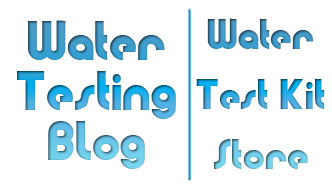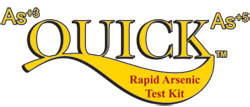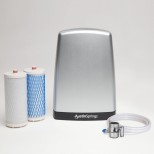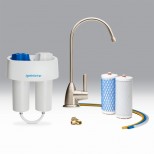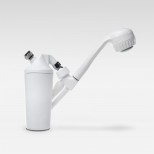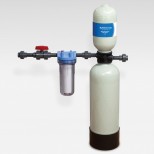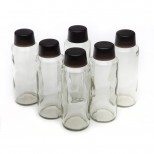The fight over fluoridation of public water supplies has raged for years… and many customers on public water systems do not even know why the fight exists. As an example, ‘Eddie43’ from Illinois recently asked, “Our water has fluoride in it we think and my wife’s friend said we can’t use it for our newborn baby’s formula because of the fluoride. Is that true?”
Thank you for your inquiry, Eddie, and congratulations to you and your wife on the new baby!
As for whether or not you can use your public water supply to dilute your child’s formula, that all depends on the amount of fluoride that your water treatment plant adds to the water it distributes.
We have read that the Center for Disease Control (CDC) has issued a recommendation against using undiluted water sources that contain fluoride concentrations at or above 0.7 mg/L (ppm) to make formula for infants 6 months of age or younger.
While fluoride does play a role in the development of healthy of a child, too much of a good thing can cause problems… like a condition known as ‘mild dental fluorosis’. Experts in the field describe dental fluorosis as visible changes to the enamel surface of the teeth.
Examples of dental fluorosis include:
- Very mild and mild forms of dental fluorosis — Teeth have scattered white flecks, occasional white spots, frosty edges, or fine, lacy chalk-like lines. These changes are barely noticeable and difficult to see except by a dental health care professional.
- Moderate and severe forms of dental fluorosis — Teeth have larger white spots and, in the rare, severe form, rough, pitted surfaces. ( source )
At this time the CDC states that symptoms of dental fluorosis develop only in the teeth of children 8 years old and younger and only before the teeth emerge through the gumline.
Why does dental fluorosis affect young children?
Scientists and health experts hypothesize that since a child drinks a lot more fluids (formula & water) when younger and smaller in size, the amount of fluoride they take in compared to their body mass puts their fluoride per pound level at a much higher concentration.
Think of this this way: If you add 1 gallon of blue dye to 10 gallons of water then the water will turn a dark blue color. This represents a small child consuming ‘normal’ amounts of fluoride. Now add that same 1 gallon of blue dye to 50 gallons of water and the water turns a much lighter shade of blue. This represents an adult or adolescent consuming ‘normal’ amounts of fluoride.
Ways to prevent dental fluorosis
Opponents of public water fluoridation immediately jump up and scream, “Stop adding fluoride to the water supply!” While that sounds like a quick fix, the battle of fluoridation of municipal water supplies has gone on for a long time so we highly doubt that it will end anytime soon — which means some public water supplies will continue to contain fluoride.
Therefore, the CDC suggests using low-fluoride water sources like bottled water when making formula bottles for infants. Check the labels on the bottled water, though, to make certain you use deionized, purified, demineralized, and/or distilled water.
For those not in favor of using bottled water, and we know a lot of folks out there who absolutely despise bottled water, by the way, we have found that a quality reverse osmosis water filter will do an excellent job of lowering fluoride levels in drinking water.
Certain undercounter and countertop water filters also do an excellent job of reducing fluoride levels in drinking water, but make sure the unit you select specifically states that it reduces fluoride levels. Not all undercounter and countertop water filters include a filter cartridge designed to reduce fluoride levels!
For a list of water filters specifically designed to target fluoride concentrations, we suggest you take a look at the Fluoride Filters page on FilterWater.Com



